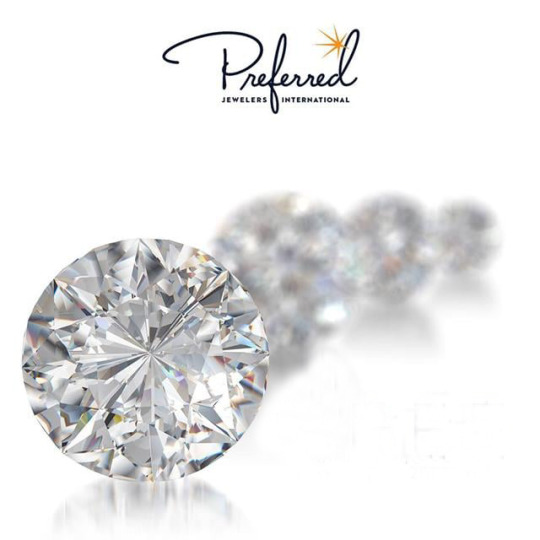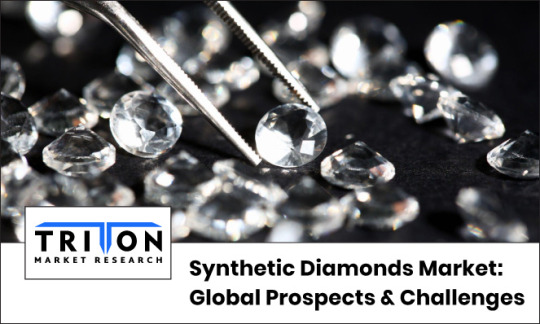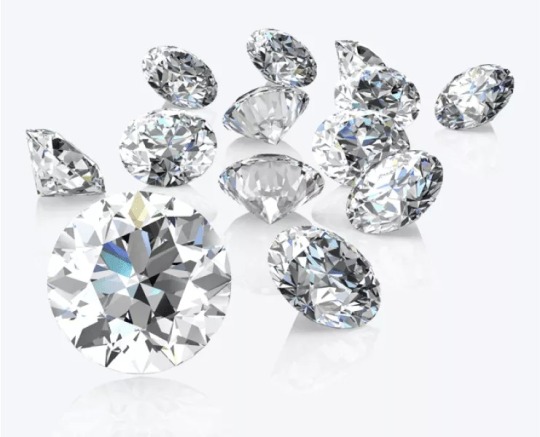#synthetic diamonds
Text

When it comes to diamonds, there are so many options to choose from- mined diamonds, Lab-Grown Diamonds, moissanite, and cubic zirconia. Though most diamonds look the same to untrained eyes, not all diamonds are the same value and feature-wise. Though lab-grown diamonds are sometimes called ‘synthetic diamonds’, there is a big difference between these and other diamond imitations like Cubic Zirconia or Moissanite.
#Lab Grown Diamonds#Lab Created Diamonds#Lab Made Diamonds#Man Made Diamonds#Synthetic Diamonds#Laboratory Diamonds#Real Diamonds#Natural Diamonds#Fake Diamonds
2 notes
·
View notes
Text
Dazzling Decisions: Choosing Lab-Created Diamonds for Your Wedding

When it comes to choosing the perfect engagement or wedding ring, many couples find themselves at a crossroads between traditional mined diamonds and their stunning lab-grown counterparts. Lab-created diamonds, often referred to as man-made diamonds, have gained immense popularity in recent years due to their ethical, environmental, and economic advantages. Let’s see why lab-grown diamonds are a brilliant choice for your wedding, and where you can find reputable lab-grown diamond manufacturers and exporters.
What Are Lab-Grown Diamonds?
Lab-grown diamonds, as the name suggests, are created in a controlled environment rather than being mined from the earth. These diamonds possess the same physical, chemical, and optical properties as natural diamonds, making them indistinguishable to the naked eye. They are composed of carbon atoms arranged in a crystal lattice structure, just like their mined counterparts.
The Ethical Advantage
One of the most compelling reasons to opt for lab-grown diamonds is their ethical sourcing. Traditional diamond mining has been associated with unethical practices, including child labor and environmental degradation. By choosing lab-grown diamonds, you can ensure that your symbol of love is free from such negative associations. These diamonds are created in labs, where labor conditions are closely monitored, and their production has a significantly lower impact on the environment.
Eco-Friendly and Sustainable
Lab-grown diamonds are also a sustainable choice. The mining of natural diamonds is an energy-intensive process that often involves extensive land disruption. In contrast, creating lab-grown diamonds requires less energy and results in significantly lower carbon emissions. Additionally, the reduced land use preserves natural habitats.
Cost-Effective
Weddings can be expensive, and every dollar counts. Lab-grown diamonds tend to be more affordable than their natural counterparts, making it easier for couples to invest in a stunning and ethical engagement or wedding ring without breaking the bank.
Lab-Grown Diamond Manufacturers and Exporters
Now that you’re convinced of the merits of lab-grown diamonds, it’s important to know where to find these dazzling gems. Reputable lab-grown diamond manufacturers and exporters play a crucial role in providing consumers with high-quality options. Here are some tips on how to find them:
Research Online: Start your search online by looking for well-known lab-grown diamond manufacturers and exporters. Browse their websites, read customer reviews, and learn about their processes and certifications.
Certifications: Ensure that the manufacturer you choose complies with industry standards and possesses necessary certifications for ethical and sustainable practices.
Customization Options: Look for manufacturers that offer customization options, allowing you to create a unique and personalized piece of jewelry.
Transparency: Opt for a manufacturer that is transparent about the sourcing and production of their lab-grown diamonds. This transparency builds trust and confidence in your purchase.
Your Dazzling Decision
Your wedding is a special day filled with love and commitment, and the ring you exchange should symbolize those values. Lab-grown diamonds offer a brilliant choice for couples seeking ethical, eco-friendly, and cost-effective options. By choosing lab-grown diamonds, you not only make a stunning fashion statement but also contribute to a more ethical and sustainable jewelry industry.
Make the dazzling decision today to opt for lab-grown diamonds for your wedding, and you’ll not only wear a beautiful gem but also wear your values on your finger.
To buy lab grown diamonds wholesale - contact best HPHT Lab Grown Diamond Company India - Riddhi Corporation LLP
#diamond#jewelry#fashion#lab grown diamonds#lab created diamonds#lab diamonds#man made diamonds#synthetic diamonds#diamond manufacturer#manufacturing#gia certified diamonds
2 notes
·
View notes
Text
Remember that lab made diamonds are much better than natural diamonds AND there’s no child slavery, apartheid or genocide involved. Also the whole diamond engagement ring thing was created by a DeBeers ad campaign so people would spend money on a product DeBeers had a monopoly on.
Also also, diamonds aren’t that rare it’s just DeBeers owns most of them and they manipulate supply to keep prices up. In fact if you buy a diamond for 20k you’d be lucky to resell for 15k which doesn’t make sense when you’re talking about a supposedly rare mineral. Gold or silver on the other can be resold by weight and purity depending on its current market value. When reselling gold you’ll only lose money on store rental and design
2 notes
·
View notes
Text

In this blog post, we'll address some of the most common questions surrounding lab diamonds and provide you with the information you need to make an informed decision. Let's dive into these intriguing questions!
#lab grown diamonds#lab created diamonds#lab made diamonds#man made diamonds#synthetic diamonds#synthetic diamond rings#lab grown diamond engagement rings#lab created diamond engagement rings
1 note
·
View note
Text
4 Most Incredible Aspects of Lab-Grown Diamonds That You Need to Know
You might be concerned about the hefty price of diamond jewelry if you're looking to purchase a diamond ring. But don't be alarmed! By choosing lab-grown diamonds, you can gain all the advantages of mined diamonds and some additional advantages.

0 notes
Text
Synthetic Diamonds Market: Global Prospects & Challenges
The staggering ramifications of the COVID-19 pandemic affected the global distribution system of major countries producing synthetic diamonds. However, post-pandemic, the diamond industry was stimulated through digital platforms. With reduced operations, companies relied heavily on digital activities while focusing on their B2C online business. Sale of synthetic diamonds was expected to increase as manufacturers gave more importance to environment friendliness and sustainability in the production of lab-grown diamonds. Thus, due to the rising branding and marketing, along with increasing industrial uses, the global synthetic diamonds market is anticipated to advance with a CAGR of 8.26% during the forecasting period 2022-2028.

Additionally, major countries such as India and China have become a hub for the production and processing of lab-grown diamonds as a result of technological breakthroughs, cost-efficient production of gem-quality stones and growing consumer awareness. The rising production is because synthetic diamonds make an ideal window material for many industrial, R&D, defense and laser applications.
Rising Industrial Demand - Key Driver
Modern technology resembles the conditions under which diamonds naturally develop by using either of the two manufacturing methods high pressure-high temperature (HPHT) or chemical vapor deposition (CVD). Our study estimates that the high pressure-high temperature will dominate the manufacturing method segment, capturing a share of 59.59% during the forecast period 2022-2028. These processes produce synthetic diamonds with the same chemical properties as earth-mined diamonds, allowing them to be used in a variety of industry applications:
Construction
Synthetic diamonds such as HPHT diamonds are used in the construction industry due to their physical hardness for cutting, sawing, and drilling, making them a highly significant commercial material. The market’s demand in the sector is driven by the need to reduce construction times while delivering economical and effective performance. For instance, North America’s construction industry is anticipated to develop with a CAGR of 8.73% during the forecast period. The region has experienced substantial expansion owing to the repairing and building of roads and highways and other construction activities.
Mining
Mining is anticipated to dominate the industry vertical with a 19.30% share throughout the forecast period. Mining tools are subjected to severe wear during extraction, conveying, and services in drilling for minerals, oil and gas exploration, or processing natural rocks. Synthetic diamonds increase the durability of mining tools, making them operationally efficient. Furthermore, China holds the highest share in rare minerals production, followed by Australia and the United States, thus increasing the use of synthetic diamonds. The country will also witness numerous gas exploration projects over the long run, which may create a market for synthetic diamonds.
Healthcare
Lab-grown diamonds are used in therapeutic and curative laser applications due to their superior optical and thermal characteristics. Synthetic diamonds designed with nitrogen-vacancy (NV) centers can detect changes in magnetic fields. These are powerful tools for biosensing technologies used in the medical detection and diagnosis of diseases. For instance, magnetoencephalography (MEG) is a neuroimaging technique used to map brain activity and trace pathological abnormalities, such as epileptic tissue. Thus, the expanding healthcare sector will likely enhance the demand for synthetic diamonds from instruments such as laser devices.
Defense
Synthetic diamonds have superior carrier mobility, break down electric field and thermal conductivity; thus, they are emerging as one of the most versatile materials for defense. They have a variety of applications in defense, such as high-power radars, communication and electronic warfare systems, directed energy weapons, etc. Additionally, AKHAN Semiconductor and Lockheed Martin demonstrated the capability of a new diamond-based coating technology. This technology acts as a new solution to increase the survivability of manned and unmanned military aircraft systems.
Future Prospects
Even though lab-grown diamonds are an inexpensive alternative to earth-mined ones, the high cost of production can result in a setback for the synthetic diamonds market. For instance, a perfect CVD diamond can take 400 hours of hatching time and specialized reactors to culture the diamonds. These reactors consume approximately 10000 units of power monthly, thereby increasing operational costs. However, the ongoing research around quantum computing, simulation, communication and sensing, with potential impacts in healthcare and the automotive industry, is expected to increase synthetic diamonds’ applications and reduce the overall production cost.
For instance, in 2021, a German-Australian start-up Quantum Brilliance announced the installation of a diamond-based quantum accelerator leveraging synthetic diamond technology. The start-up stated promising applications, leading to major benefits for drug design, chemical synthesis, energy storage and nanotechnology.
FAQs
Q1) Which is the leading region in the synthetic diamonds market?
Asia-Pacific is likely to be the fastest-growing region globally, developing at a CAGR of 8.34% throughout the forecasting period 2022-2028.
Q2) What are the segments covered in the synthetic diamonds market?
Coloration, manufacturing method, industry vertical and sales channel are the segments covered in the synthetic diamond market.
#Synthetic Diamonds Market#Synthetic Diamonds#Chemicals and Material#Triton market research#market research trends
0 notes
Text
What are Lab Created Synthetic Gemstones & Cubic Zirconia Diamonds?
Lab created synthetic gemstones and cubic zirconia diamonds are man-made gems that have been engineered in a laboratory to look like natural stones. These lab-grown gems have the same chemical and physical properties as their natural counterparts, making them indistinguishable from the real thing. They are also much less expensive than genuine diamonds and other precious stones, making them an attractive alternative for those looking for affordable jewelry options. In addition, synthetic diamonds can be made with a variety of colors and shapes, allowing wearers to create unique looks that would be impossible with traditional stones.

Lab created synthetic gemstones and Cubic Zirconia diamonds are man-made alternatives to natural diamonds. They are produced in laboratories using advanced technology and processes, making them look similar to real diamonds. Lab created gemstones are usually cheaper than their natural counterparts, making them an attractive option for those looking for a diamond alternative. Furthermore, synthetic diamonds and cubic zirconia diamonds have fewer flaws than natural stones, which make them perfect for jewelry pieces that require a higher level of clarity. With the increasing popularity of lab created synthetic gemstones and Cubic Zirconia diamonds, they have become an excellent choice for those who want to enjoy the beauty of a diamond without breaking the bank.
Lab created synthetic gemstones and cubic zirconia diamonds are becoming increasingly popular among jewelry lovers. They are man-made diamonds that offer the same sparkle and brilliance of a real diamond but at a fraction of the cost. Lab created synthetic gemstones and cubic zirconia diamonds are perfect for those who want to enjoy the beauty of a diamond without breaking the bank. They can be used in engagement rings, wedding bands, necklaces, earrings, and other pieces of jewelry. Lab created synthetic gemstones and cubic zirconia diamonds provide an excellent alternative to real diamonds for those looking to add some sparkle to their lives without compromising on quality or budget.
#lab created gemstones#synthetic diamonds#cubic zirconia diamond#synthetic gemstone#man made diamonds
0 notes
Link

In this article post, we will explore the benefits of lab-grown diamonds in order to help you make a more informed decision about your jewelry purchase. We’ll cover everything from the environmental impact to the quality of the diamond itself.
#lab grown diamonds#lab made diamonds#man made diamonds#lab created diamonds#synthetic diamonds#Laboratory grown diamonds
1 note
·
View note
Text
Synthetic Diamonds Market: Global Prospects & Challenges
The staggering ramifications of the COVID-19 pandemic affected the global distribution system of major countries producing synthetic diamonds. However, post-pandemic, the diamond industry was stimulated through digital platforms. With reduced operations, companies relied heavily on digital activities while focusing on their B2C online business. Sale of synthetic diamonds was expected to increase as manufacturers gave more importance to environment friendliness and sustainability in the production of lab-grown diamonds. Thus, due to the rising branding and marketing, along with increasing industrial uses, the global synthetic diamonds market is anticipated to advance with a CAGR of 8.26% during the forecasting period 2022-2028.
Additionally, major countries such as India and China have become a hub for the production and processing of lab-grown diamonds as a result of technological breakthroughs, cost-efficient production of gem-quality stones and growing consumer awareness. The rising production is because synthetic diamonds make an ideal window material for many industrial, R&D, defense and laser applications.
Rising Industrial Demand - Key Driver
Modern technology resembles the conditions under which diamonds naturally develop by using either of the two manufacturing methods high pressure-high temperature (HPHT) or chemical vapor deposition (CVD). Our study estimates that the high pressure-high temperature will dominate the manufacturing method segment, capturing a share of 59.59% during the forecast period 2022-2028. These processes produce synthetic diamonds with the same chemical properties as earth-mined diamonds, allowing them to be used in a variety of industry applications:
Construction
Mining
Healthcare
Defense
Future Prospects
Even though lab-grown diamonds are an inexpensive alternative to earth-mined ones, the high cost of production can result in a setback for the synthetic diamonds market. For instance, a perfect CVD diamond can take 400 hours of hatching time and specialized reactors to culture the diamonds. These reactors consume approximately 10000 units of power monthly, thereby increasing operational costs. However, the ongoing research around quantum computing, simulation, communication and sensing, with potential impacts in healthcare and the automotive industry, is expected to increase synthetic diamonds’ applications and reduce the overall production cost.
For instance, in 2021, a German-Australian start-up Quantum Brilliance announced the installation of a diamond-based quantum accelerator leveraging synthetic diamond technology. The start-up stated promising applications, leading to major benefits for drug design, chemical synthesis, energy storage and nanotechnology.
#synthetic diamonds market#synthetic diamonds#cvd diamonds market#specialty chemicals#chemicals and materials#market research reports#triton market research
0 notes
Text

Cartier Paris Necklace, Bracelet and Ear Clips, Circa 1951
Platinum, Gold, Diamonds, Rubies and One Synthetic Ruby. Necklace Converts To Brooches
Photo Courtesy: Vincent Wulveryck, Collection Cartier
Source: forbes.com
#cartier#cartier paris#cartier jewelry#diamonds#rubies#ruby#synthetic ruby#platinum#ruby and diamond jewelry#high jewelry#luxury jewelry#fine jewelry#fine jewellery pieces#gemville#vintage ruby and diamond jewelry
195 notes
·
View notes
Text

The characteristics of Lab-Grown Diamonds are comprised of carbon, the same material natural diamonds are comprised of. As a result, both stones are equally durable.
#Lab Grown Diamonds#Lab Created Diamonds#Lab Made Diamonds#Man-Made Diamonds#Synthetic Diamonds#Laboratory Diamonds
1 note
·
View note
Text
The Future of Diamonds: How HPHT Technology is Changing the Industry
Diamonds have captivated hearts for centuries, their brilliance a symbol of love, commitment, and enduring beauty. But the traditional diamond industry has faced growing scrutiny in recent years. Ethical concerns and environmental impact have led many consumers to question the origin of their stones.
Enter HPHT (High Pressure, High Temperature) technology, a game-changer for the diamond industry. This innovative process mimics the natural diamond formation process under controlled laboratory conditions, creating ethically-sourced, stunning diamonds with the exact same physical and chemical properties as their mined counterparts.
Here's how HPHT is transforming the future of diamonds:
Ethical Brilliance: HPHT lab diamonds offer a conflict-free alternative. You can be confident your stones haven't fueled environmental damage or social injustice. This resonates with today's socially conscious consumers who value transparency and ethical sourcing.
Sustainable Sparkle: Gone are the days of large-scale mining and its impact on the environment. HPHT lab grown diamonds are created in controlled settings, minimizing the environmental footprint. This aligns perfectly with the growing demand for sustainable practices in the jewelry industry.
Unmatched Beauty: HPHT technology allows for precise control over the diamond's growth process. This results in exceptional clarity, color, and brilliance, rivaling even the most coveted mined diamonds. Your customers can experience the timeless elegance of diamonds without sacrificing quality.
Accessibility for All: HPHT lab made diamonds are often more affordable than mined diamonds of comparable quality. This opens the doors for a wider audience to experience the joy of diamond jewelry, expanding the market and customer base for retailers.
Are you ready to embrace the future of HPHT lab grown diamonds?
As a leading HPHT lab-grown diamond manufacturer, we offer a wide range of exquisite stones perfect for any design vision. Our commitment to quality, ethical sourcing, and sustainable practices ensures you can confidently provide your customers with the diamonds they deserve.
#diamond manufacturer#jewelry#gia certified diamonds#lab grown diamonds#lab diamonds#man made diamonds#manufacturing#synthetic diamonds#lab created diamonds#diamond#loose diamonds#white diamonds#wholesale#color diamonds#fancy color diamonds
0 notes
Text
I simply think if you’re going to have dogged devotion you also need to emphasize the “dog”
….. and also I like giant monsters

Original Synthetic Red Diamond design by @cherrifire and BigB design by @chrisrin
#I’m so so insane about synthetic red diamond literal brain rot#my absolute beloved#art#gemcyt#I literally just realized like yesterday that it’s gemcyt and not gemyct#the likelihood that I have dyslexia seems to increase every day#renthedog#inthelittlewood#itlwart#bigbstatz#no id
394 notes
·
View notes
Text
Haven't actually drawn in like a month due to bad artblock but then gemcyt came so 👏👏
(Click for better quality!)

(Synthetic red diamond design by @cherrifire )
+ sketch and lineart under the read more :)


#mcyt#mcytblr#gemcyt#gemcyt synthetic diamond#renchanting duo#trafficblr#the design is so pretty to me#tho i did accidentally make the metal front part go down instead of up#also the arm is too small :')#but i havent drawn since june so i still like it lmao
253 notes
·
View notes
Text
Character who goes through a monstrous transformation and sees themself in the mirror for the first time, and it seems like they're gonna be horrified for a few seconds but then it turns out that they think the new body makes them even hotter
#toh eda#toh edalyn#eda the owl lady#harpy eda#gemcyt red king#gemcyt synthetic red diamond#gemcyt srd#those are the only two i can think of off the top of my head#if you got more hit me up
43 notes
·
View notes
Text
Synthetic Diamonds Market: Global Prospects & Challenges
Chemicals and Material
17, November 2022

The staggering ramifications of the COVID-19 pandemic affected the global distribution system of major countries producing synthetic diamonds. However, post-pandemic, the diamond industry was stimulated through digital platforms. With reduced operations, companies relied heavily on digital activities while focusing on their B2C online business. Sale of synthetic diamonds was expected to increase as manufacturers gave more importance to environment friendliness and sustainability in the production of lab-grown diamonds. Thus, due to the rising branding and marketing, along with increasing industrial uses, the global synthetic diamonds market is anticipated to advance with a CAGR of 8.26% during the forecasting period 2022-2028.
Additionally, major countries such as India and China have become a hub for the production and processing of lab-grown diamonds as a result of technological breakthroughs, cost-efficient production of gem-quality stones and growing consumer awareness. The rising production is because synthetic diamonds make an ideal window material for many industrial, R&D, defense and laser applications.
Rising Industrial Demand - Key Driver
Modern technology resembles the conditions under which diamonds naturally develop by using either of the two manufacturing methods high pressure-high temperature (HPHT) or chemical vapor deposition (CVD). Our study estimates that the high pressure-high temperature will dominate the manufacturing method segment, capturing a share of 59.59% during the forecast period 2022-2028. These processes produce synthetic diamonds with the same chemical properties as earth-mined diamonds, allowing them to be used in a variety of industry applications:
Construction
Synthetic diamonds such as HPHT diamonds are used in the construction industry due to their physical hardness for cutting, sawing, and drilling, making them a highly significant commercial material. The market’s demand in the sector is driven by the need to reduce construction times while delivering economical and effective performance. For instance, North America’s construction industry is anticipated to develop with a CAGR of 8.73% during the forecast period. The region has experienced substantial expansion owing to the repairing and building of roads and highways and other construction activities.
Mining
Mining is anticipated to dominate the industry vertical with a 19.30% share throughout the forecast period. Mining tools are subjected to severe wear during extraction, conveying, and services in drilling for minerals, oil and gas exploration, or processing natural rocks. Synthetic diamonds increase the durability of mining tools, making them operationally efficient. Furthermore, China holds the highest share in rare minerals production, followed by Australia and the United States, thus increasing the use of synthetic diamonds. The country will also witness numerous gas exploration projects over the long run, which may create a market for synthetic diamonds.
Healthcare
Lab-grown diamonds are used in therapeutic and curative laser applications due to their superior optical and thermal characteristics. Synthetic diamonds designed with nitrogen-vacancy (NV) centers can detect changes in magnetic fields. These are powerful tools for biosensing technologies used in the medical detection and diagnosis of diseases. For instance, magnetoencephalography (MEG) is a neuroimaging technique used to map brain activity and trace pathological abnormalities, such as epileptic tissue. Thus, the expanding healthcare sector will likely enhance the demand for synthetic diamonds from instruments such as laser devices.
Defense
Synthetic diamonds have superior carrier mobility, break down electric field and thermal conductivity; thus, they are emerging as one of the most versatile materials for defense. They have a variety of applications in defense, such as high-power radars, communication and electronic warfare systems, directed energy weapons, etc. Additionally, AKHAN Semiconductor and Lockheed Martin demonstrated the capability of a new diamond-based coating technology. This technology acts as a new solution to increase the survivability of manned and unmanned military aircraft systems.
Future Prospects
Even though lab-grown diamonds are an inexpensive alternative to earth-mined ones, the high cost of production can result in a setback for the synthetic diamonds market. For instance, a perfect CVD diamond can take 400 hours of hatching time and specialized reactors to culture the diamonds. These reactors consume approximately 10000 units of power monthly, thereby increasing operational costs. However, the ongoing research around quantum computing, simulation, communication and sensing, with potential impacts in healthcare and the automotive industry, is expected to increase synthetic diamonds’ applications and reduce the overall production cost.
For instance, in 2021, a German-Australian start-up Quantum Brilliance announced the installation of a diamond-based quantum accelerator leveraging synthetic diamond technology. The start-up stated promising applications, leading to major benefits for drug design, chemical synthesis, energy storage and nanotechnology.
FAQs
Q1) Which is the leading region in the synthetic diamonds market?
Asia-Pacific is likely to be the fastest-growing region globally, developing at a CAGR of 8.34% throughout the forecasting period 2022-2028.
Q2) What are the segments covered in the synthetic diamonds market?
Coloration, manufacturing method, industry vertical and sales channel are the segments covered in the synthetic diamond market.
#Synthetic Diamonds Market#Synthetic Diamonds#Chemicals and Material#Triton market research#market research trends
0 notes